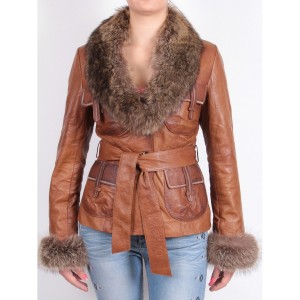The jackets that were originally designed at the time of the Second World War for the bomber pilots came in a variety of designs and styles that were later identified by the United States Aviation Clothing board in way of code numbers.
And among these jackets the ones that were the most popular were the A-2, that was specially designed for the use of air force and the G-1 that was specially designed for the use of navy and Marine Corps bomber pilots. And after all, this came to the sheepskin flying jackets made of shearling; these jackets were designed to be lines with the sheepskin. Its popularity boiled to a point that it became imperative for each of the pilots to own at least one sheepskin flying jacket because of the warmth and the insulation that it used to provide. Given that they used to fly in open cockpits at the height of 30,000 feet, these jackets were a savior for them.
These jackets were introduced in a variety of designs and styles that were ranging from the B-3 shearling bomber jackets to the M-455 that was also a navy jacket. Among all these sheepskin jackets the one that took the cake was the B-3 jacket that was crowned the place of the classic military jacket. These jackets were not just restricted to the wearing of bomber pilots but also by the nonflying officers who liked to flaunt the stylish look and found them jackets to be extremely comfortable and cozy. And in no time these jackets took rage among the other people as well and were placed in commercial factories for their military style and rough look. These commercial sectors started to keep sheepskin flying jackets for sale for the civilians and it started to sell like hot cake, everyone wanted one for themselves.
B-3 comparatively was a heavier jacket in real and was made from hand-dyed leather that gave it a classic russet brown color and a light mottled finish. There was a shearling/sheepskin lining at the lining of these jackets that used to extend below the cuffs and the waist and that is where they get their name from. These jackets were the ideal choice to make for high altitude flying missions where it was highly cold for the pilots to handle. There were a few modifications done in the jacket over the time and by the understanding of the demand of the kind of jackets needed by the bomber pilots or the civilians, zippers were added to the jacket and pockets were sewed to the right side as well.
Later in the early 40’s, the design of a few jackets was changed a bit and that was mostly done to cut down on the manufacturing costs. In place of the sleeves being made from one piece of the skin, leftover strips from the russet-hued hand-dyed leather from the last produce were put together and stitched to a darker brown leather o the top of the arm. This was the same leather that was used to make the body of the rest of the jacket.
The B-3 was substituted by the AN-J-4 in the early 40’s, before the end of World War II. This design was also tried to line with sheepskin but it failed as the lining wasn’t visible at the cuffs, and there was a single strap that closed the neck, instead of two. This shearling bomber jacket also had a zippered waist adjustment, and it had two pockets on the inside. These jackets made their place in due course of time among the civil and were already a necessity and style statement for the military and navy. Now high o demand, these shearling flying jackets have become a must-have in each one’s wardrobe.
